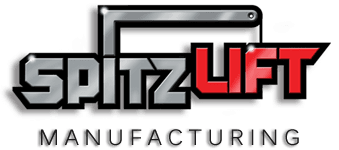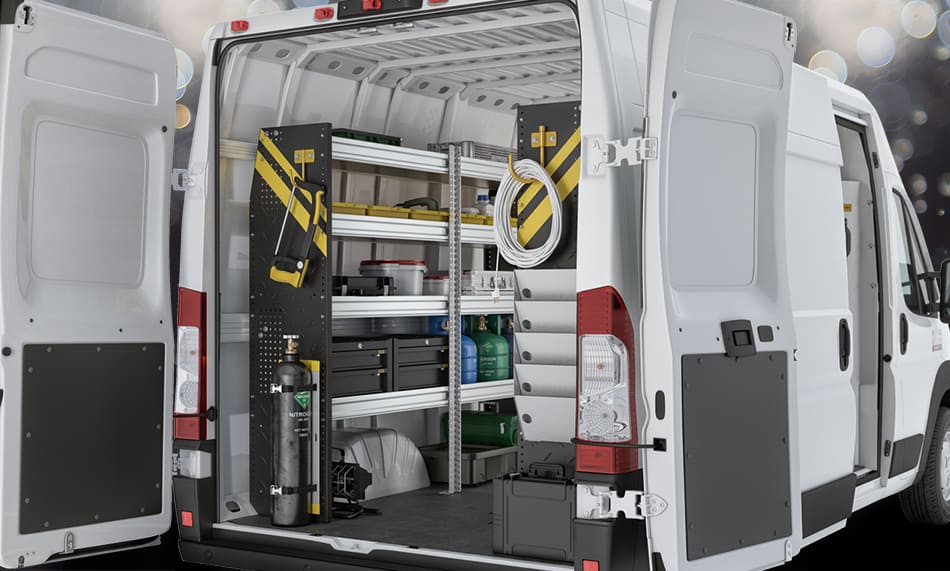Saturday, July 30, 2022
Thursday, July 28, 2022
Tuesday, July 26, 2022
Find the Right Van Accessories for Your Work Van
Find your Work Van with the Most Useful Van Accessories
Van Accessories for Organization:
Van Accessories for Driver Comfort & Safety:
Learn other simple tricks to help Safeguard Your Work Van Against Tool Theft.
Thursday, July 21, 2022
Tuesday, July 19, 2022
Ask An Expert - Towing and Hauling Tips with Mark Hellwig
Hellwig Suspension Products CEO, Mark Hellwig has been in the load and sway control business his whole life. Over the years he has learned a few things about towing and hauling.
Mark shares a few tips and pieces of advice for proper and safe towing and hauling in this video.
Sunday, July 17, 2022
What If You Forget To Change Your Oil?
What if you forget to change your oil on time? Can you damage your car's engine by not changing the oil late? Do you really need to change your oil every 3,000 miles? Obviously, you should change your oil regularly, but exactly how much damage you will cause by changing the oil late? This video looks to answer this question. We'll discuss what happens to oil viscosity as it ages, and what happens to oil additives in over time.
Saturday, July 16, 2022
FORD DEALERS NOW HAVE ACCESS TO REMOTE-ASSISTANCE TECHNOLOGY TO HELP GET CUSTOMERS BACK ON THE ROAD QUICKER
- Two-way, hands-free electronic headset provides real-time visual and audio communication between dealership technicians and team members at the Ford Technical Assistance Center in Dearborn, allowing for more efficient diagnoses
- Technology uses remote assistance software powered by augmented reality, which allows team members at the Technical Assistance Center to display modified or enhanced images to the dealer technician through the headset
- SWIS is a global program and currently being used in Canada, South Africa, UK, Puerto Rico, Taiwan, and Australia
DEARBORN, Mich., June 27, 2022 – Ford dealerships across the country now have access to state-of-the-art remote viewing technology allowing them to receive real-time assistance for customer repairs from team members at the Ford Technical Assistance Center (TAC) in Dearborn.
“The remote technology is designed to assist the technicians as they’re working on vehicles – with the goal of increasing efficiency and decreasing down time for customers,” says David Green, Ford General Service Equipment Program Specialist. “This technology modernizes and simplifies our operations, benefiting everyone involved.”
The two-way, hands-free electronic headset, known as See What I See (SWIS), allows for both visual and audio communication between the dealership technicians and team members at the Technical Assistance Center.
The technology uses remote assistance software allows the technical assistance team to see what the dealership tech is seeing while they work on the vehicle in real time. SWIS’s augmented reality capability allows TAC team members to display modified or enhanced images on the headset for the dealer technicians to view.
According to Green, “We had one case where a technician reported the vehicle would not recognize the low tire pressure sensors. When the tech contacted the Hotline using SWIS, they quickly found out they were using the wrong tool when they tech held it up in front of the camera. Once the right tool was used, everything was programmed just the way it should.”
At the TAC headquarters, a team of about 150 technicians receives about 5,000 calls from dealership technicians across the U.S. each week looking for support or answers regarding a variety of issues. Of those, about 200 cannot be diagnosed by phone; field agents must be sent out to check out the issue in person.
“SWIS definitely helps get our customers back on the road more quickly. We’ve had some wiring situations that we were able to fix in a few hours versus a few days using See What I See and that’s really valuable,” says Susan Padro, Service Manager at Mullinax Ford in Apopka Florida.
Ford has activated 1200 of the headsets so far with more than 350 SWIS calls to TAC in the last 90 days. All US-based dealers should have SWIS in their toolbox by November of this year.
Currently, SWIS is for diagnostic assistance, but designers are working to enhance the headsets to add more specific use cases such as H-VAC concerns. Other uses cases include gaining prior approval before replacing a windshield by sending pictures of the defect instantly. Fleets are looking to leverage the headset to assist a technician on site with certain electric vehicle repairs instead sending an engineer allowing for faster repairs and savings on travel costs. Mobile service teams are also looking at using SWIS to remote in from someone’s driveway where they are performing a service like tire changes. Training remotely using the headset between an instructor and a student is another valuable use case to avoid having to attend a distant training center.
About Ford Motor Company
Ford Motor Company (NYSE: F) is a global company based in Dearborn, Michigan, that is committed to helping build a better world, where every person is free to move and pursue their dreams. The company’s Ford+ plan for growth and value creation combines existing strengths, new capabilities and always-on relationships with customers to enrich experiences for and deepen the loyalty of those customers. Ford develops and delivers innovative, must-have Ford trucks, sport utility vehicles, commercial vans and cars and Lincoln luxury vehicles, as well as connected services. Additionally, Ford is establishing leadership positions in mobility solutions, including self-driving technology, and provides financial services through Ford Motor Credit Company. Ford employs about 182,000 people worldwide. More information about the company, its products and Ford Credit is available at corporate.ford.com.
Thursday, July 14, 2022
SpitzLift Cranes - Many Applications

SPTIZLIFT SPECS:
- Meets ASME and OSHA standards
- Components manufactured according to ISO compliance
- Made in USA
- Load capacity: 650 - 900 lbs.
- Crane weight: 36- 45 lbs.
- Lifting speed 22 ft. per/minute
- 2” strap is UV resistant and abrasion resistant
SAFETY FEATURES OF ELECTRIC CRANES:
- Safety release auxiliary handle
- Circuit breaker system for overload protection
- Dynamic and disc brake dual load control system

Learn more about SpitzLift: ABOUT US
SpitzLift Product Catalog
Driving Tips for Wet Roads
Tuesday, July 12, 2022
The 2022 Ford Maverick Pickup: EcoBoost Capability | Maverick | Ford
Saturday, July 9, 2022
Safety Tips for Teen Drivers | Consumer Reports
Friday, July 8, 2022
Introducing the 2023 Ford F-150® Heritage Edition | F-150 | Ford
Wednesday, July 6, 2022
WARN New Products Video
Sunday, July 3, 2022
How V8 Engines Work - A Simple Explanation
V8 engines operates under the same basic principles as any other gasoline four-stroke engine. First the piston pulls in air and fuel as it moves downward, then it compresses that air and fuel as the piston moves upward. A spark plug fires, igniting the air/fuel mixture and forcing the piston downward. Finally the piston pushes out the exhaust gases on its way back up, before for the cycle repeats itself.
In a V8 engine, this cycle is happening in 8 different cylinders, at different times. Instead of multiple cylinders firing at the same time, you want them to be spread out so that power delivery is smooth. For this Chevy V8, the firing or is 1, 8, 7, 2, 6, 5, 4, 3. With 8 cylinders, there is a cylinder firing for every 90 degrees of the crankshaft rotating, which means at any point in time, there are two cylinders on the power stroke.
With regards to the valvetrain, the intake air comes from the top of the engine, and into the sides of the cylinder head. The exhaust flows to the sides of the engine, exiting the exhaust valves from the cylinder head. In this LS3 model, there is a single intake valve and a single exhaust valve, though it’s also common to see engines with two intake valves and two exhaust valves. The larger valve is the intake valve, and the smaller valve is the exhaust valve.
The pushrod valvetrain gets its name from the metal pushrods which activate the rocker arms which open up the valves. The camshaft, located in the center of the V, has lobes on it which push the push rods up, opening the appropriate valves. For a full explanation of V8 engines, check out the video!


